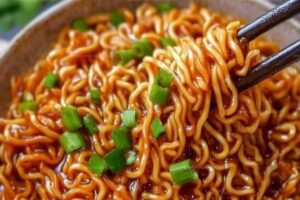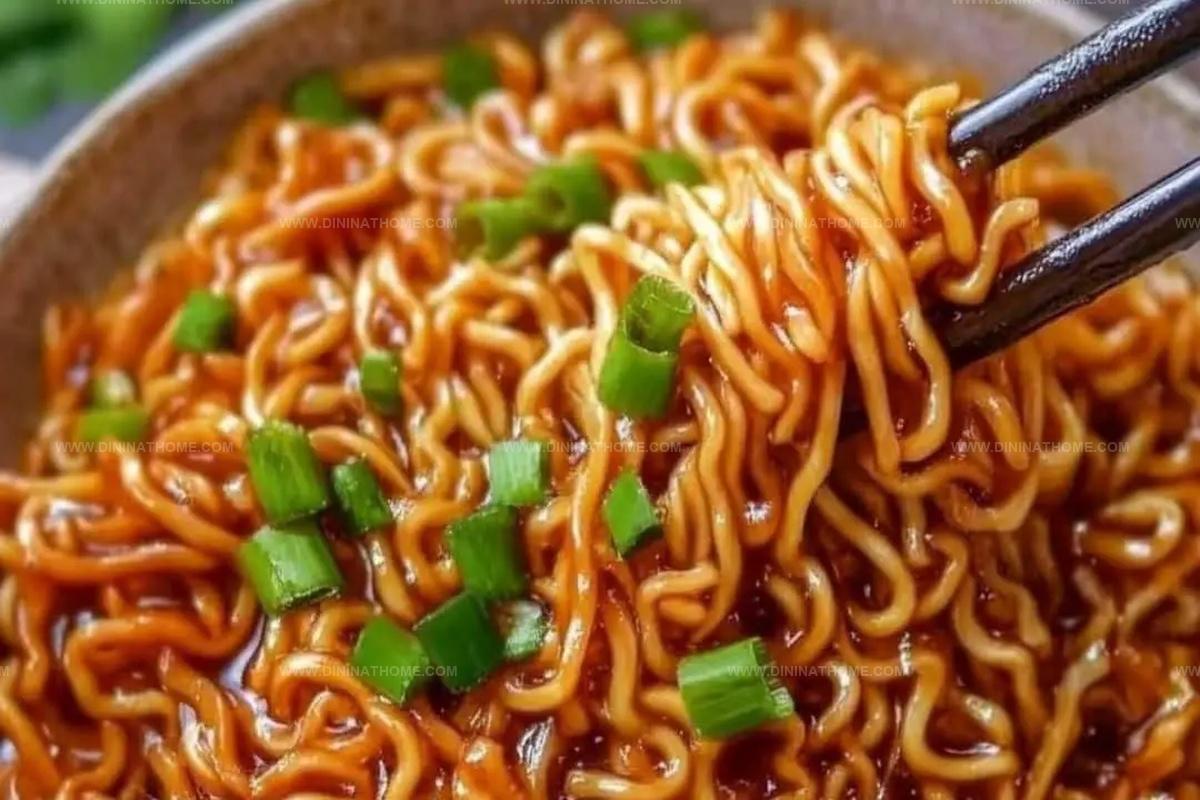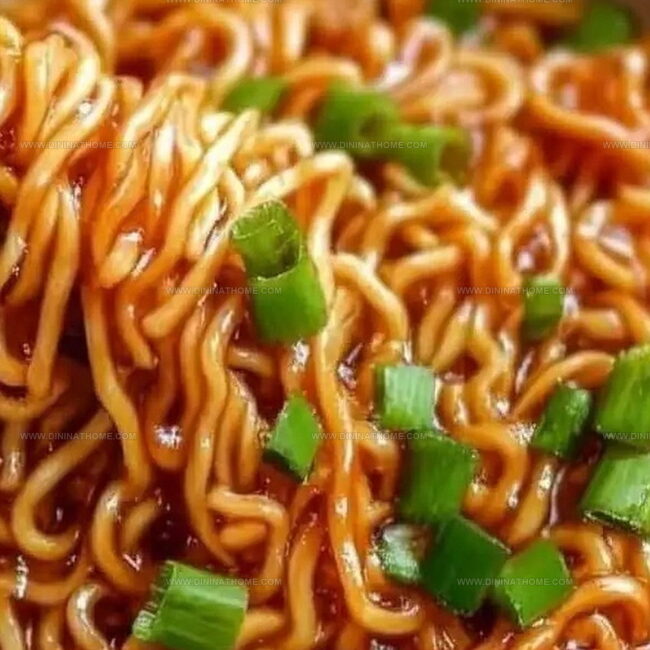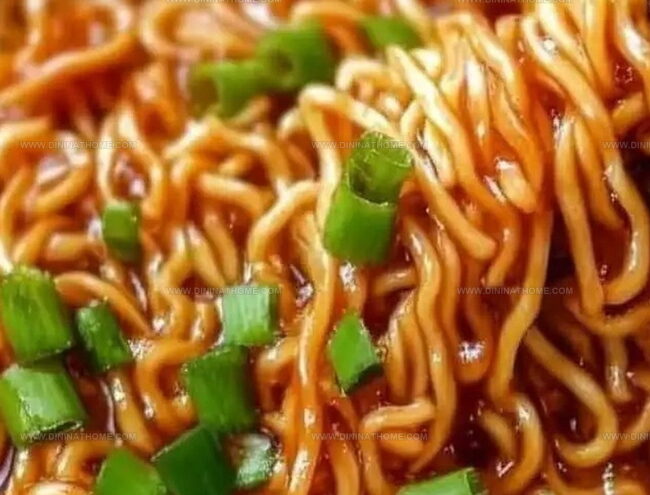Homemade Panda Express Chow Mein Recipe: Irresistibly Tasty
Diving into a beloved chow mein recipe from Panda Express can transport you to a world of savory delights.
Memories of bustling Chinese-American restaurants flood back with every noodle.
Comfort and nostalgia blend perfectly in this simple yet satisfying dish.
Crisp vegetables and tender noodles dance together, creating a symphony of flavors.
Cooking at home means you control the ingredients and seasoning intensity.
Mastering this iconic takeout favorite becomes an exciting culinary adventure.
Each bite promises a delicious journey that brings restaurant magic right to your kitchen table.
Panda Express Chow Mein – Homemade and Just as Addictive
Panda Express Chow Mein Ingredients
Noodle Base:Vegetable Medley:Flavor Enhancers:Chow Mein Restaurant-Style Steps
Step 1: Boil Noodles
Cook noodles in boiling water following package directions.
Ensure noodles are al dente, maintaining a slight firmness as they will continue cooking later.
Step 2: Slice Vegetables
Prepare vegetables for the dish:Cut each vegetable into thin, uniform strips to ensure even cooking.
Step 3: Create Sauce
Combine sauce ingredients in a small bowl:Whisk together until well blended.
Step 4: Sauté Aromatics
Heat wok or large skillet over medium-high heat.
Add vegetable oil and allow to warm.
Sauté garlic for 30 seconds until fragrant.
Add prepared vegetables:Stir-fry for 2-3 minutes until vegetables begin to soften but retain crispness.
Step 5: Combine and Finish
Drain noodles and transfer directly to wok.
Pour sauce over noodles and vegetables.
Use tongs to toss and coat everything thoroughly.
Cook for additional 2-3 minutes, allowing noodles to develop slight crispiness in some areas.
Stir-Fry Prep for Chow Mein Copycat Recipes
Chow Mein Stored Safely
Chow Mein Side Pairing Ideas
Panda Express Chow Mein Copycat Styles
FAQs
Fresh or thin wheat noodles are ideal. You can use fresh lo mein noodles, egg noodles, or even spaghetti in a pinch. Avoid thick, heavy pasta that might make the dish too dense.
Currently, this is a vegetable chow mein recipe. To make it fully vegetarian, replace oyster sauce with vegetarian oyster sauce made from mushrooms or use soy sauce as a substitute.
Yes, use gluten-free soy sauce and gluten-free noodles. Rice noodles or 100% rice spaghetti work great as alternatives to traditional wheat noodles.
The recipe as written is not spicy. If you want heat, add red pepper flakes, sriracha sauce, or chopped fresh chili peppers during the stir-frying process to customize the spice level to your preference.
Print
Panda Express Chow Mein Recipe
- Total Time: 25 minutes
- Yield: 2 1x
Description
Panda Express chow mein brings authentic Chinese-American street flavor right to your kitchen, creating a quick and satisfying noodle experience. Crisp vegetables and savory sauce combine perfectly, letting anyone recreate this restaurant favorite with minimal cooking skills.
Ingredients
Main Protein and Noodles:
- 8 ounces (226 grams) lo mein egg noodles (or spaghetti as a substitute)
Vegetables:
- 1 cup sliced cabbage
- 1/2 cup sliced celery
- 1/2 cup sliced onions
- 2 cloves garlic, minced
Sauce and Seasonings:
- 2 tablespoons vegetable oil
- 3 tablespoons soy sauce
- 1 tablespoon oyster sauce
- 1 teaspoon sesame oil
- 1 teaspoon sugar
- 1/4 teaspoon white pepper
Instructions
- Prepare boiling water and cook noodles until they reach a perfect al dente texture, ensuring they maintain a slight firmness for later cooking.
- Meticulously slice cabbage, celery, and onions into uniform, thin strips to guarantee even cooking and professional presentation.
- Create the signature sauce by whisking together soy sauce, oyster sauce, and sesame oil in a compact mixing vessel, blending flavors that define the dish’s characteristic taste profile.
- Ignite a wok or expansive skillet over medium-high thermal intensity, introducing vegetable oil to create a sizzling cooking environment.
- Introduce minced garlic to the heated oil, allowing it to release its aromatic essence for approximately 30 seconds without scorching.
- Swiftly incorporate sliced onions, celery, and cabbage into the garlic-infused oil, stir-frying for 2-3 minutes to achieve a crisp-tender consistency.
- Drain the previously cooked noodles and transfer them directly into the vegetable-laden wok, ensuring complete integration.
- Cascade the prepared sauce over the noodle and vegetable mixture, utilizing tongs to thoroughly coat and intermingle all components.
- Continue cooking for an additional 2-3 minutes, permitting select noodle sections to develop a subtle crispness and absorb the rich, complex flavors.
Notes
- Cook noodles al dente to maintain a perfect texture, ensuring they won’t turn mushy during further cooking in the wok.
- Prep vegetables uniformly for even cooking and professional-looking presentation, creating consistent bite and appearance.
- Whisk sauce ingredients separately to blend flavors deeply, allowing each component to integrate smoothly before combining with noodles.
- Use high heat and quick stir-frying technique to lock in vegetable crispness and prevent overcooking, maintaining vibrant colors and nutritional value.
- Customize recipe by adding protein like chicken, shrimp, or tofu for extra nutrition and variety.
- Reduce sodium by using low-sodium soy sauce and controlling salt content without compromising authentic flavor profile.
- Make gluten-free by substituting regular noodles with rice noodles or zucchini noodles for alternative dietary needs.
- Prep Time: 15 minutes
- Cook Time: 10 minutes
- Category: Lunch, Dinner
- Method: Sautéing
- Cuisine: Chinese
Nutrition
- Serving Size: 2
- Calories: 440
- Sugar: 1 g
- Sodium: 920 mg
- Fat: 20 g
- Saturated Fat: 3 g
- Unsaturated Fat: 15 g
- Trans Fat: 0 g
- Carbohydrates: 56 g
- Fiber: 2 g
- Protein: 10 g
- Cholesterol: 0 mg




Emily Harper
Nutrition Consultant & Recipe Analyst
Expertise
Healthy Recipe Modification, Nutritional Analysis & Meal Planning, Global Cuisine & Dietary Adaptations
Education
School: French Pastry School, Chicago, IL
Program: L’Art de la Pâtisserie
Focus: Intensive training in traditional French pastry techniques, baking theory, and confectionery arts.
Emily’s journey started in a pastry kitchen but took a detour into the world of health and flavor science.
Graduating from the French Pastry School and studying nutrition opened her eyes to a new mission: making healthy food taste like something you’d actually crave.
At Dining At Home, Emily’s the go-to for smart, feel-good recipes that don’t trade flavor for nutrition.
She’s all about adding a fresh spin on old favorites and finding small ways to make everyday meals a little brighter.
Outside of the kitchen, Emily is most at home walking forest trails, testing plant-based recipes, or sharing a picnic under a wide-open sky.